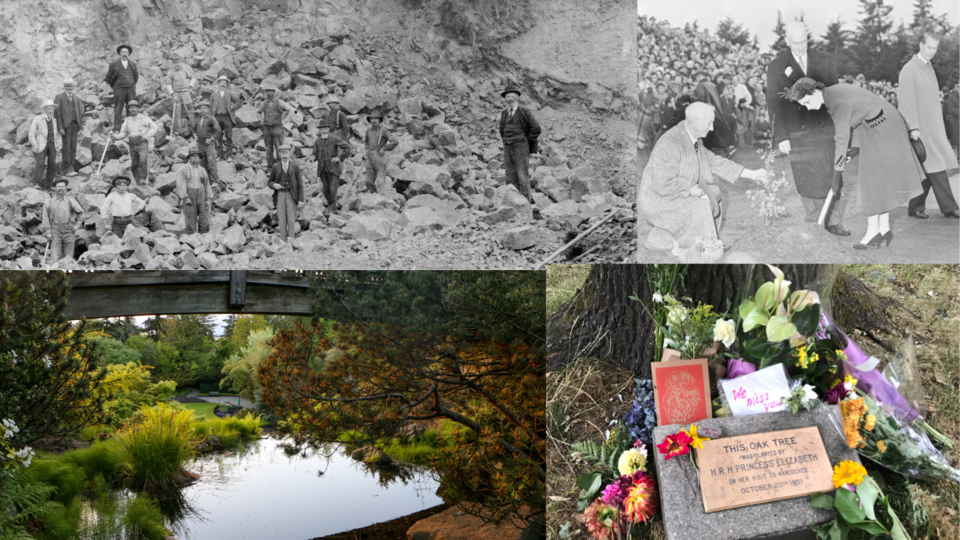If it weren't for Stanley Park, Queen Elizabeth Park would probably be the crown jewel of Vancouver's parks.
Located nearly dead centre in the city, the 130-acre area has been a notable landmark longer than it has been a park. Before being covered in trees, it was a major quarry for the region, with stone being used for roads in places like Gastown around the turn of the century.
In the 1930s new ideas were floated for the land after the quarries went into disuse, and the plan of turning it into a huge park came forward.
And here are some things you might not have known about it.
1. It's not named after Queen Elizabeth II
While it'd be easy to assume the long-reigning monarch was the source of the name, it wasn't. In fact, there have been a couple of Queen Elizabeths (that's why Queen Elizabeth II is referred to as the second). However, the park isn't named after Queen Elizabeth I.
Instead, it's named after Queen Elizabeth II's mother, Queen Elizabeth. Married to King George VI, she was officially raised to the title of Queen consort, or Queen Elizabeth The Queen Mother.
When the royal couple came to Vancouver in 1939 the park was in the midst of its transformation from industrial site to park and it was dedicated to the visiting queen.
2. Princess Elizabeth planted a tree there
While it's not named after her, Queen Elizabeth II did visit the park. In 1951, while she was still a princess, she toured it, saw a dance, and planted an oak tree.
That oak tree is still there, with a plaque underneath it near the Duck Pond.
3. There are around 1,500 trees, with many local and exotic species represented
Speaking of trees, Queen Elizabeth Park has a lot of them. While it's not forested like Stanley Park, it has its own special woody, feature: Canada's first civic arboretum.
With hundreds of trees, the curated selection of trees numbers around 1,500 with examples of all sorts of species. Most are local to some extent, like Western redcedar or Douglas firs, there are lots of more exotic types. Some are common around town, like Japanese cherry trees, and European beeches.
There are also gingko trees, Persian silk trees, and Japanese katsura.
4. It's the highest point in Vancouver, but...
Back when Vancouver was founded Little Mountain, the hill that Queen Elizabeth Park is built on, was the highest point in the area.
And it's still the highest point in the city...sort of. Sources give different heights for the summit, with some saying it's as high as 500 feet, or about 151 metres. The city's own elevation map lists it as over 124 metres but not more than 126 meters, or about 410 feet.
In either case, the Shangri-La skyscraper in the city's centre stands over 200 meters tall, or 659 feet. That's not including the fact it's somewhere around 40 meters above sea level at ground level. There are actually at least four buildings that stand higher than the elevation of Little Mountain, even with the Bloedel Conservatory's dome.
On top of that, Little Mountain's top may have been raised a bit back in the day, when a reservoir was built on top for water pressure. And there's a chance it was higher before that, but the quarry may have lowered it.
5. There's a large in-system reservoir on top of it
By the way, that reservoir is totally still there.
If you didn't see it the last time you visited the park, it might be because you were walking on it.
Metro Vancouver's largest in-system reservoir is sitting below the parking lot at the top of the park.





